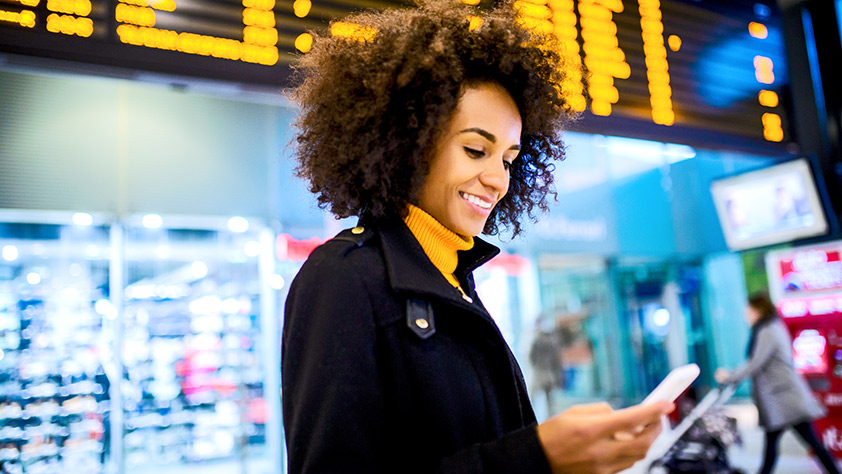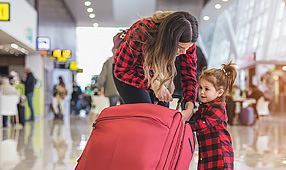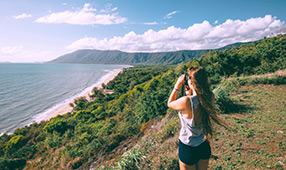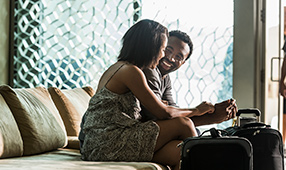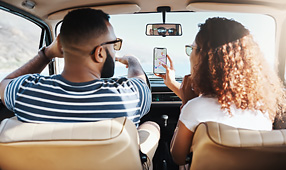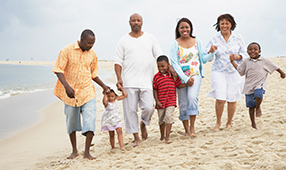Staying safe isn’t only about avoiding dark alleys and questionable neighborhoods while on the road. It's also about keeping your online footprint protected in today’s increasingly digital world. The following tips cover precautions you should follow to ensure you keep healthy and safe while traveling.
BEFORE YOU GO
1. Consider travel insurance
Travel insurance offers protection in cases of illness, travel delays, a death in the family, job loss or unexpected travel interruptions. Many airlines let you add on low-cost insurance ($15 to $30) to the price of your ticket. But if you’re planning a big trip, it’s worth considering more comprehensive services through a reputable company like Travelex or Allianz. If you use NEA Travel to book your trip, travel insurance is offered as an option.
2. Make an “in case of emergency” card
No matter where you’re traveling, designate an “emergency contact” and keep that person’s information handy. Place a clearly marked “emergency contact” card with your contact’s name and telephone number inside your wallet. Note any medical issues or allergies on the back of the card. Include your doctor's contact information as well. Some cellphones allow you to program ICE (in case of emergency) contacts, allergies and medications you take. Check your phone and enter in the important information.
3. Make sure someone gets your mail/newspapers
If you’re leaving town for more than a few days, appoint a friend or neighbor to retrieve your newspaper and mail, or ask to have it held at the post office. The USPS will hold mail according to your wishes and deliver it all on the day you return home. An overflowing mailbox or papers piling up on the porch can make you a target for burglary.
4. Monitor your home virtually
Many home security systems allow you to install small, wireless cameras that you can monitor via an app or desktop. With these, you can review daily activity in or around your home while you’re away and notify the authorities if anything looks amiss.
ON THE ROAD
5. Don’t advertise your valuables at TSA
Don’t show off your prized possessions at the airport. Keep your attire modest to avoid scrutiny from travelers. Place your valuables—like jewelry—inside your carry-on bag in a separate pouch.
6. Keep your “must-haves” with you
Keep your medication and a small selection of daily necessities, such as your contact lens case and a small vial of solution, in your carry-on bag just in case your luggage gets lost.
7. Get Global Entry/TSA PreCheck
Global Entry, a trusted traveler vetting program available through Homeland Security, allows you to easily enter the country without waiting in customs lines once you pass a series of interviews and background checks. The cost, $100 for five years, is often covered by major travel credit cards as a perk, and the membership fee includes access to TSA PreCheck, which provides quicker passage through security screening—without the need to remove your shoes or belt or your laptop or liquids from your carry-on bag—at 180 U.S. airports. Both of these programs require a short in-person interview at a TSA enrollment center, some which are closed as of press time due to the pandemic. Other offices are open but require visitors to wear a face mask. You can find information about your local enrollment center here.
8. Carry small bills
Whether you’re traveling domestically or internationally, it’s always a good idea to carry some cash. Some stores, street markets and restaurants don’t take credit, and in addition to avoiding high ATM and foreign transaction fees, you may get a discount by paying cash. Avoid large denominations and carry small bills in local currency instead. If you’re worried about carrying cash while you’re out and about, store most of it in the hotel safe.
9. Keep a passport and driver’s license copy handy
If you’re traveling internationally, make a copy of your passport and driver’s license for your wallet or purse. Once at your destination, put your passport in the hotel safe. That way, if you find yourself in a tricky situation, you have documentation of your passport on hand, but you won’t risk losing it while on the go. You can also take a photo of both on your phone to have if you are away from your hotel room if IDs are lost.
10. Stick to hotel-suggested transportation or app services
Ride-hailing apps such as Uber and Lyft are often a safe bet when traveling both domestically and internationally. It’s cashless, and drivers are background-checked by their employer. Plus, you can easily broadcast your route and arrival time to trusted friends and family. If you can’t use one of these services, stick to clearly marked cabs with labeled paperwork or allow the hotel to arrange transportation.
11. Wear a fanny pack
A fanny pack or “traveler’s pack” may sound like a dead giveaway that you’re a tourist, but these once-nerdy items have come back into style thanks to their ability to keep you zipped up and hands-free. Plus, some museums no longer allow large backpacks inside so these are a great way to carry your items. You can also try a discreet “money belt,” which hides under your clothes, if you are mainly carrying small items. For women who prefer purses, try a small, cross-body style that zips or securely buckles closed, so that no items can fall out or be easily lifted.
12. Use the hotel’s deadbolt, chain and safe
Once you’re inside your hotel room, utilize both the deadbolt and door chain. The hotel safe is also the best place to store valuables, from your electronics to jewelry to passports along with that extra cash.
13. Draw the curtains
You’ll also want to draw your curtains, particularly at night and especially if your room is located on the ground floor. Even tinted windows can allow passers-by to see right into hotel rooms at night, making it easy to spy laptops, cameras and other valuables.
14. Don’t allow yourself to be followed
Many hotels require that guests use a keycard to access their floor. Make sure that everyone in the elevator with you uses their own card to select their floor. And don’t let anyone slip onto your floor, unit or building after you when you use your keycard. If you feel uncomfortable, simply step off or return to the lobby and ask a security guard or someone from the front desk to walk you to your room.
15. Protect your credit card with a special wallet
Invest in an RFID-protected wallet that prevents the small chip in your credit card from being read and possibly hacked by remote devices.
SOCIAL MEDIA TIPS
16. Pre-determine how much you’re comfortable sharing about your vacation
If you’re traveling with friends and family, it’s best to have a frank conversation with your travel mates about how much you want to share, both pre- and post-vacation. If you have a social media-inclined friend, it’s perfectly polite to ask them to only “tag” you in approved photos, or to avoid tagging you at all.
17. Social media privacy settings are your friend
Best intentions can go awry on vacation. So before you go, know your privacy settings on each platform you use. Facebook and Instagram allow you to edit on a global and post-by-post basis who can see each status and uploaded image, as well as modify how someone can “tag” you in an image. If you want to share vacation snaps, feel free to do so, but make sure your sharing is for friends only, not the general public. You can even create custom lists to share your updates to just a curated group of friends.
18. Be careful where (and with whom) you share your digital location
Many sites, including Twitter, Instagram and Facebook, allow you to easily share your posting location. While these “geo-tags” can be a fun way to show off where you’ve visited to friends and family, they can also alert less savory characters that you’re away from home. Restrict your location to close friends and family or no one at all to stay safest. Instagram allows you to create lists of people that only see selected posts.
19. Don’t advertise that you’ll be away from home
It goes without saying that you’ll lock your front door before you leave the house, but posting a “headed on a two-week vacation” notice without the proper privacy settings on social media means that you’re leaving your “virtual” front door open. Before you travel, make sure your passwords are strong, your computers are logged out and shut off and that you’ve checked your privacy settings if you plan to post from the road.
20. Be mindful of travel apps and auto posting
Sites such as TripIt can be useful for organizing complex itineraries while on the road, but make sure that these convenience apps don’t “auto post” your updates to social media while you’re on the go. While it’s easy to authenticate in to these services using your social media login, it’s best to create a username and password that doesn’t tie these services to all of the data available in your social media profile. If you must link the accounts, make sure your privacy settings are turned on and the app is not auto posting to your profile. If you enjoy the updates, set the auto posts to show to you, and you alone.
